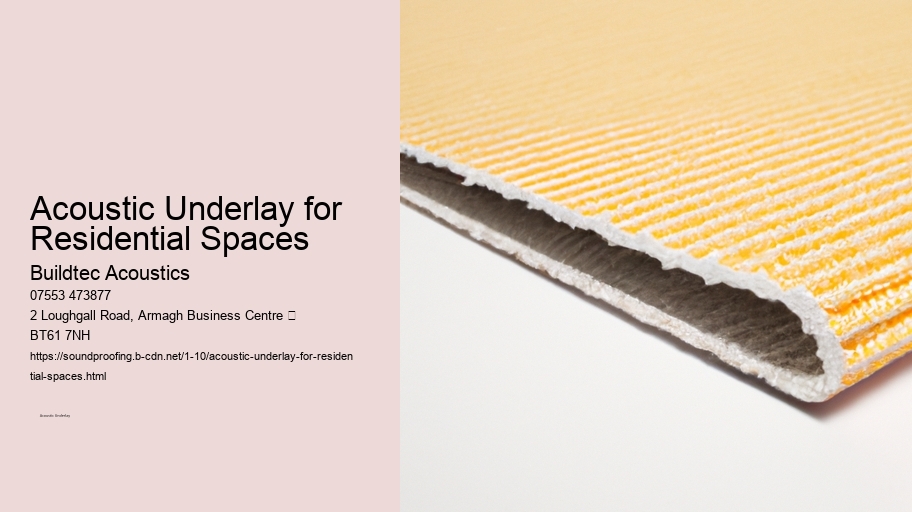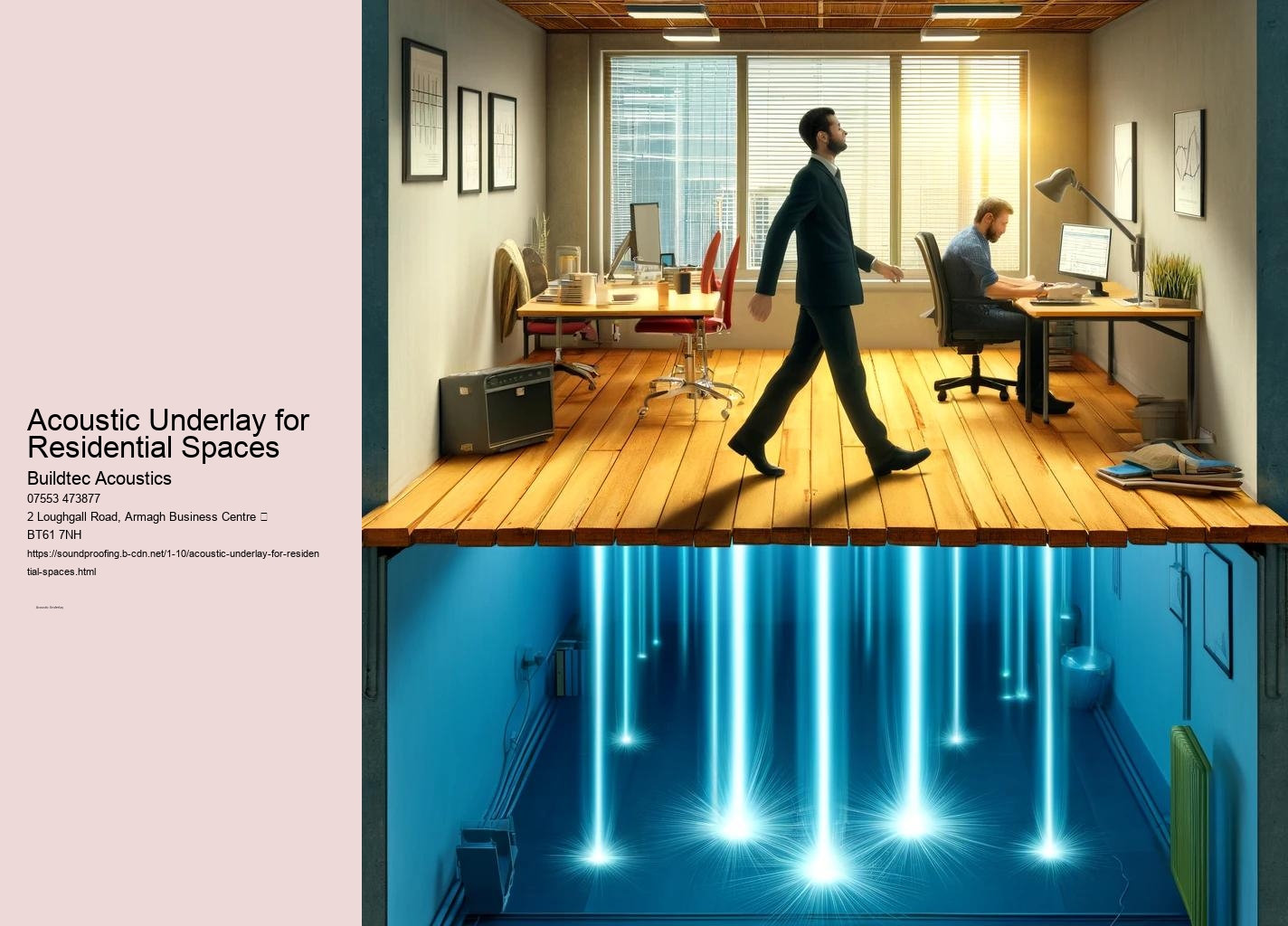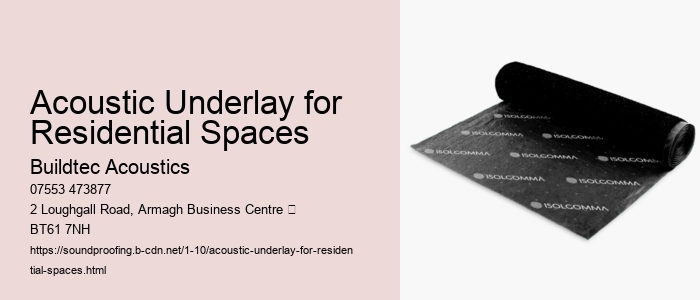

In rooms with underfloor heating, selecting an underlay with low thermal resistance allows heat to transfer efficiently without being obstructed by the soundproofing material. Impact noise results from vibrations caused by activities such as walking, moving furniture, or using appliances like washing machines. Looking to dampen noise in your office then use acoustic underlay under your floor. Additionally, these materials are low in volatile organic compound (VOC) emissions, which contributes to a healthier indoor environment.
With a range of materials, including cork, foam, natural rubber, and recycled fibers, Buildtec Acoustics ensures that there is an environmentally friendly and efficient product for every need. Acoustic underlays installed beneath wood or laminate flooring can significantly reduce noise levels in rooms.
Before installing an acoustic underlay, it is important to ensure that the subfloor-whether concrete, particle board, or cement-is clean, level, and dry. When considering soundproofing methods, acoustic underlays provide a reliable way to reduce noise pollution, improve room acoustics, and create a more comfortable environment.
They are particularly effective when used with materials like ceramic tiles or floating floors, providing both sound insulation and comfort underfoot.
During renovations, installing acoustic underlays can significantly improve the acoustic properties of existing floors, whether in residential or commercial settings. Buildtec Acoustics offers a variety of acoustic underlays to meet different needs, including those designed for underfloor heating systems. For instance, Tecsound underlays are often used beneath concrete or screed subfloors to add a layer of soundproofing that is effective against vibration and noise.
The installation of acoustic underlays is straightforward and suitable for both professionals and do-it-yourself (DIY) enthusiasts. Acoustic underlays are versatile and can be used in a wide range of settings, from residential homes to commercial spaces such as offices or retail environments.
With acoustic underlays, these sounds are absorbed, contributing to improved room acoustics. In commercial settings, reducing noise pollution creates a more productive and pleasant work environment, enhancing overall efficiency.
During renovations, installing acoustic underlays can significantly improve the acoustic properties of existing floors, whether in residential or commercial settings. From mitigating noise pollution to improving energy efficiency, acoustic underlays are a versatile solution that supports both functionality and aesthetics in modern building design.
Exploring the thermal insulation benefits of acoustic underlays.

Posted by Francis Mckenna on
A simple guide to installing acoustic underlays for noise reduction.

Posted by Francis Mckenna on
By choosing the appropriate product for the specific noise control requirement, homeowners and businesses can create a quieter, more comfortable environment. Impact noise occurs from activities such as walking, moving furniture, or using appliances like washing machines, while airborne noise includes conversations, music, and television. Airborne noise, such as music or conversations, can be reduced by choosing underlays with higher sound transmission class ratings.
Acoustic underlays made from polyvinyl chloride (PVC) or cork are ideal choices, as they balance both thermal insulation and soundproofing requirements. Installing acoustic underlay beneath wood flooring or laminate flooring can greatly reduce noise levels in rooms.
Hard surfaces, such as hardwood and laminate, tend to amplify sounds like footsteps, which can lead to unwanted echo and reverberation. In residential buildings, whether in a semi-detached house or an apartment, acoustic underlays are often used under laminate flooring, hardwood, or carpets to reduce the noise that can travel through the walls, ceiling, and stairs.
The materials used in acoustic underlays, such as foam, cork, and natural rubber, contribute significantly to reducing vibrations and sound transmission. During renovations, installing acoustic underlays can significantly improve the acoustic properties of existing floors, whether in residential or commercial settings.


Installing an acoustic underlay beneath carpets in office spaces can help mitigate foot traffic noise and other disturbances, improving the room's dynamics. Whether the flooring type is laminate, ceramic, or hardwood, Buildtec Acoustics offers underlays that are specifically engineered to work with the chosen material. Acoustic underlays are useful in many applications, including renovation projects.
Buildtec Acoustics offers a variety of acoustic underlays to meet different needs, including those designed for underfloor heating systems. Buildtec Acoustics offers a broad range of acoustic underlays designed to address both airborne and impact noise, providing versatile solutions for various flooring applications, including wood flooring, ceramic tiles, and laminate flooring.
For rooms with underfloor heating, selecting an underlay with low thermal resistance ensures that heat can transfer efficiently without being obstructed by the soundproofing material. This allows consumers to achieve their preferred aesthetics without sacrificing soundproofing performance.
By utilizing high mass density materials, such as crumb rubber and cork, acoustic underlays offer efficient energy use through noise control, reducing the impact of sound on occupants in adjacent rooms or units. Some underlays are certified by Leadership in Energy and Environmental Design (LEED) standards, supporting sustainable building practices.
Acoustic underlay is a specialized material that plays a critical role in noise control within residential and commercial spaces. For example, underlays installed beneath medium-density fibreboard (MDF) or gypsum drywall help absorb vibrations and reduce unwanted sound transmission. For example, underlays installed beneath medium-density fibreboard (MDF) or gypsum drywall help absorb vibrations and reduce unwanted sound transmission.
Airborne noise, such as music or conversations, can be reduced by choosing underlays with higher sound transmission class ratings. Acoustic underlays made from polyvinyl chloride (PVC) or cork are ideal choices, as they balance both thermal insulation and soundproofing requirements.
This process involves transforming sound energy into heat, which then dissipates without causing disturbances. The choice of acoustic underlay depends on the type of noise to be managed.
Airborne noise, such as music or conversations, can be reduced by selecting underlays with higher sound transmission class ratings. From mitigating noise pollution to improving energy efficiency, acoustic underlays are a versatile solution that supports both functionality and aesthetics in modern building design.


From managing noise pollution to improving energy efficiency, acoustic underlays are a versatile solution that supports both functionality and aesthetics in modern building design. Whether the flooring type is laminate, ceramic, or hardwood, Buildtec Acoustics provides underlays specifically designed to complement the chosen material. Installing acoustic underlay beneath wood or laminate flooring can significantly reduce noise levels in rooms.
For example, underlays used beneath medium-density fibreboard (MDF) or gypsum drywall can help absorb vibrations and reduce the transmission of unwanted sound. By selecting the right product for the specific noise control requirement, homeowners and businesses can create a quieter, more comfortable environment.
Installing acoustic underlays beneath carpets in office spaces helps mitigate foot traffic noise and other disturbances, improving room dynamics.
Acoustic underlays are versatile and suitable for use in a variety of settings, from residential homes to commercial spaces such as offices or retail environments. They are installed beneath the visible flooring material, meaning that the desired flooring-whether elegant hardwood, practical laminate, or cozy carpet-remains unaltered. Additionally, these materials provide thermal insulation, enhancing the thermal resistance of a room while also managing noise levels.
Most underlays come in sheets or rolls and can be cut to size using simple tools like a utility knife. Impact noise is created by vibrations resulting from footsteps, moving furniture, or appliances like washing machines, while airborne noise includes sound sources like conversations, music, and television.
The use of recycled fibers and materials supports recycling efforts while minimizing the environmental footprint of soundproofing installations. The use of recycled fibers and materials encourages recycling while reducing the environmental footprint of soundproofing installations.
This allows consumers to achieve their preferred aesthetics without sacrificing soundproofing performance. In residential buildings, whether in a semi-detached house or an apartment, acoustic underlays are commonly installed under laminate flooring, hardwood, or carpets to reduce noise transmission through walls, ceilings, and stairs.

Acoustic underlays are designed to absorb the vibrations caused by impact noise, such as footsteps or moving furniture. By using high-density materials like crumb rubber or cork, these underlays effectively reduce the transmission of vibrations, leading to quieter environments.
Acoustic underlay can be installed beneath most types of flooring, including laminate, wood, and tiles. The subfloor should be clean, level, and dry before installation. The underlay is typically rolled out and cut to size, with seams tightly butted together. It can be secured with adhesive or double-sided tape if needed.